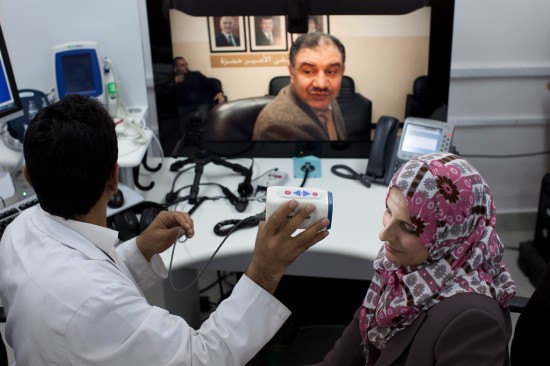With all the frenzied fanfare normally surrounding the debut of new Apple products, the iPhone 6 and iPhone 6 Plus were recently introduced to the masses. And though these new phones were the big news of the day for the technology giant, the Apple Watch is what the healthcare industry has its eyes on.
Released alongside the new iPhones, the Apple Watch is able to sync with apps that track wearers’ basic health and fitness activity trends, including heart rate and travelled distance on a run. More than a timekeeper, Apple’s most robust entry into the “wearables” market meets users at the intersection of technology and health, competing with standalone smart watches, fitness trackers and other multi-functional devices.
While the early reviews on how much the smart watch will revolutionize the industry are still inconclusive, the overall enthusiasm from consumers demonstrates how technology continues to rapidly change the face and future of healthcare – and how ready we are to embrace it. This embrace, of course, comes as no surprise to champions of telehealth and telecare. Technology has been a major influencer on Cisco’s Jordan Healthcare Initiative, demonstrating how technology can bridge gaps in patient care and bring about quality of life that wasn’t conceivable before.

Responding to a vision of His Majesty King Abdullah II to evolve Jordan’s healthcare industry, Cisco collaborated with the country’s Ministry of Health and the Ministry of Information and Communications Technology (ICT) to create the first “care-at-a-distance” clinic in the region. The clinic is the bridge between cardiology, nephrology and dermatology specialists at Prince Hamzah Hospital in Amman and smaller rural medical facilities like Al-Mafraq Governmental Hospital.
Using Cisco HealthPresence technology that combines communication, collaboration, and video technologies, patients and caregivers are able to connect as if they were sitting in the same exam room.
With the help of local healthcare professionals, a network of connected devices – thermometers, stethoscopes, blood pressure cuffs, cameras – relays vitals to the larger hospital for immediate views of the data.
Can you imagine the possibilities these connections create? No more missed appointments due to lack of funds to travel to larger hospitals miles away. No more rushed consultations with doctors who have to see dozens of patients in a single day. Real-time dialogue between physicians and rural patients has proven beneficial to both patients and providers. It extends a provider’s reach, increases access to critical healthcare, improves efficiency, and empowers patients in their quest toward better health. The success of the program has not gone unnoticed by the Jordanian government; in the first 18 months of implementation, the Al-Mafraq clinic enabled almost 450 consultations. The program has since expanded access to additional hospitals and mobile units, all utilizing Cisco solutions.
As a registered nurse, I’ve had a front-row perspective of the healthcare world for several years. And as a technology executive and enthusiast, I’m a daily witness to how an influx of creative and thoughtful uses of technology enables healthcare professionals to deliver care to patients virtually anywhere in the world. Accounting for the varying degrees of medical care available worldwide, connecting rural or impoverished patients with medical teams can be a seemingly formidable challenge. But, the barriers can be broken. Technology has expanded the connection possibilities for anyone in the world with a smart device. Now, we are just seeing the beginnings of how leveraging it can enrich, transform, and save lives.
For more information, visit Cisco’s Corporate Social Responsibility’s website and watch Collaborative Technology Transforms Healthcare Delivery in Jordan.


CONNECT WITH US